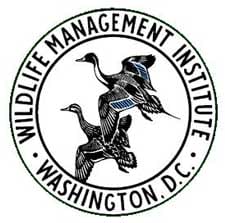Scale of Habitat Selection an Important Factor in Sage-grouse Research
![march2010_sagegr_2[1] Sage Grouse](https://www.ammoland.com/wp-content/uploads/2010/03/march2010_sagegr_21.jpg)

Gardners, PA –-(Ammoland.com)- Successful sage-grouse management can be best accomplished through habitat conservation at the landscape-level but with understanding of specific habitat variables at the local level that cannot be mapped using Geographic Information System (GIS) programs.
The study, conducted by Kevin Doherty, formerly with the National Audubon Society in Laramie Wyoming, along with David Naugle and Brett Walker of the University of Montana, is published in this month’s Journal of Wildlife Management.
The new research will help guide management priorities for the species that now is formally listed as a candidate for Endangered Species Act protection, reports the Wildlife Management Institute.
“Considering habitat selection at multiple scales is essential to fully understand habitat requirements and management needs for wildlife species of concern. Local-scale habitat variables that cannot currently be mapped in a GIS strongly influence sage-grouse nest-site selection, but only within priority nesting habitats defined at the landscape scale,” the authors wrote.
“Our results indicate that habitat treatments for nesting sage-grouse applied in areas with an unsuitable landscape context are unlikely to achieve desired conservation results.”
The scientists analyzed local-scale habitat variables in the field and landscape-level variables with GIS modeling for the Powder River Basin of Montana and Wyoming from 2003 to 2007. No previous studies evaluated the relative importance of landscape context versus local habitat for nesting sage-grouse.
The objectives of the research were to:
- (1) create a habitat selection model for nesting sage-grouse at local scales using field-derived data, at landscape scales using GIS-derived data, and at multiple scales;
- (2) evaluate the relative importance and interpretation of local, landscape and multiscale models using variance decomposition and information theoretic techniques;
- (3) apply a landscape-scale model to spatial data quantified in a GIS to identify specific portions of the landscape within the study region with high probability of use by nesting females; and
- (4) validate the best approximating models with independent nest and lek data sets, to ensure appropriateness for management.
The research provides new insights into how to use GIS-based models to identify the best places and management actions to enhance populations on a local scale. The amount of sagebrush and visual obstruction at nest sites were not the sole determinants of site selection; these local-scale habitat predictors will only affect site selection if they are within landscape-level priority habitats. The research suggests that sage-grouse management in an unsuitable landscape area is unlikely to achieve the desired conservation results. Because the study was better able to predict nesting habitat selection by sage-grouse, its results strongly support the need for multiscale models. (jas)
About:
Wildlife Management Institute: Founded in 1911, WMI is a private, nonprofit, scientific and educational organization, dedicated to the conservation, enhancement and professional management of North America’s wildlife and other natural resources. Visit: www.wildlifemanagementinstitute.org
